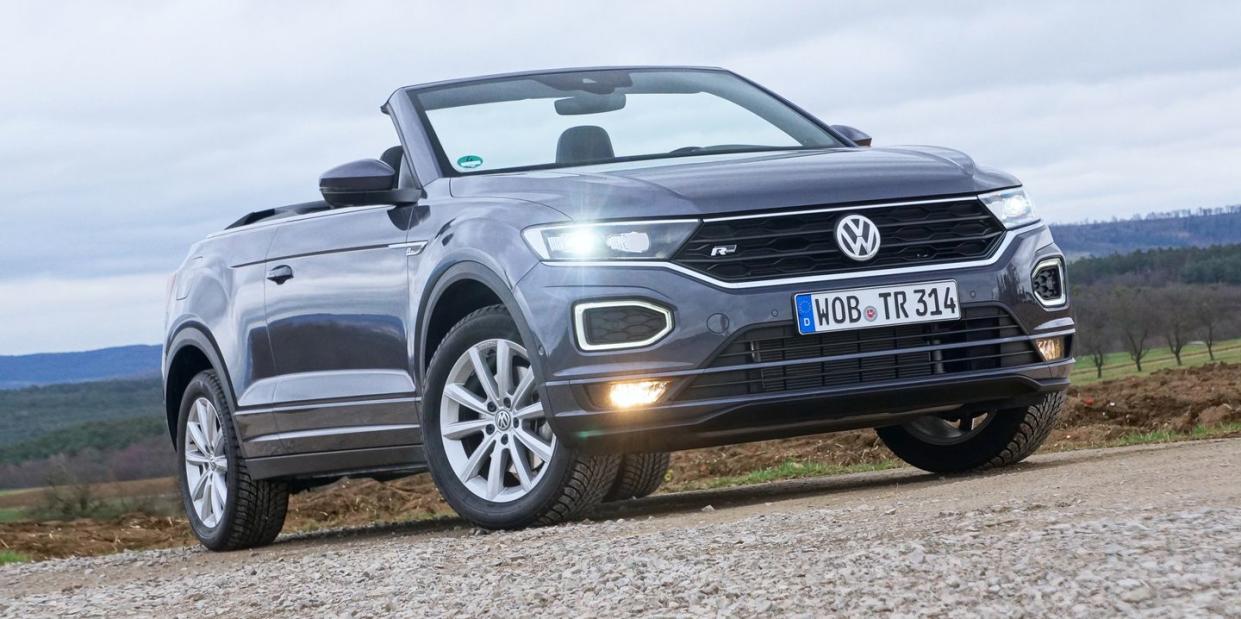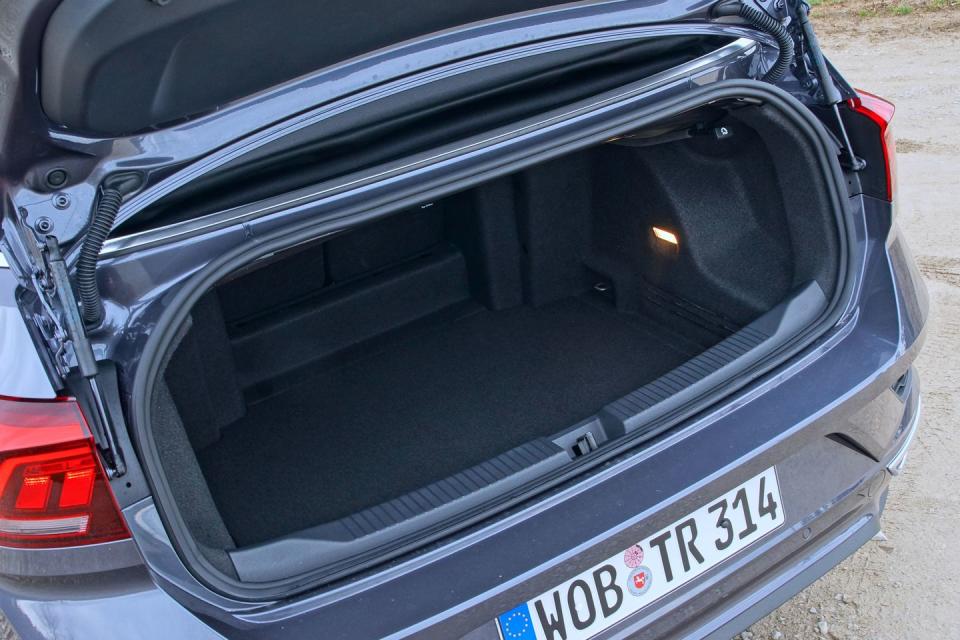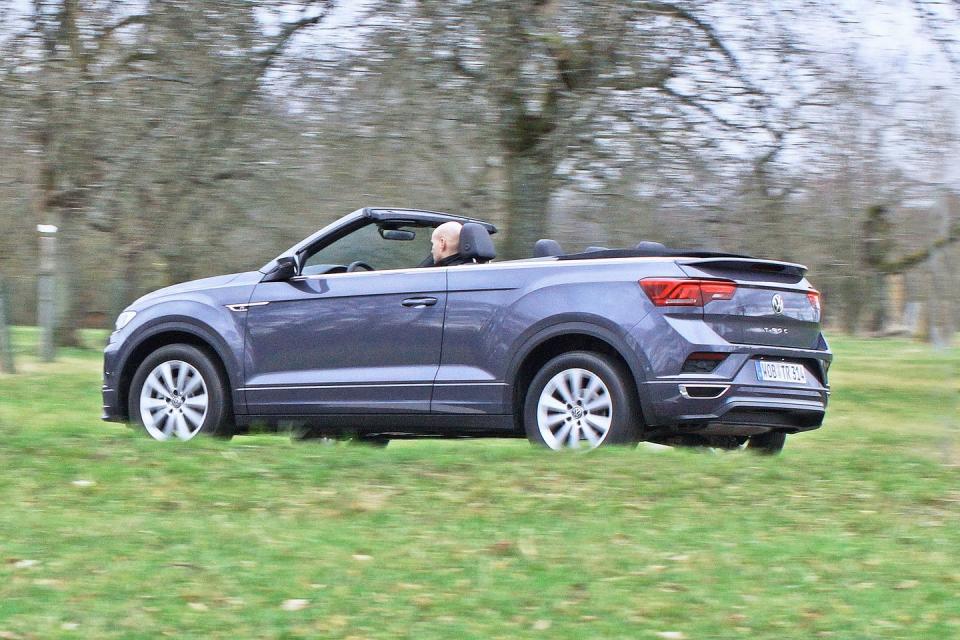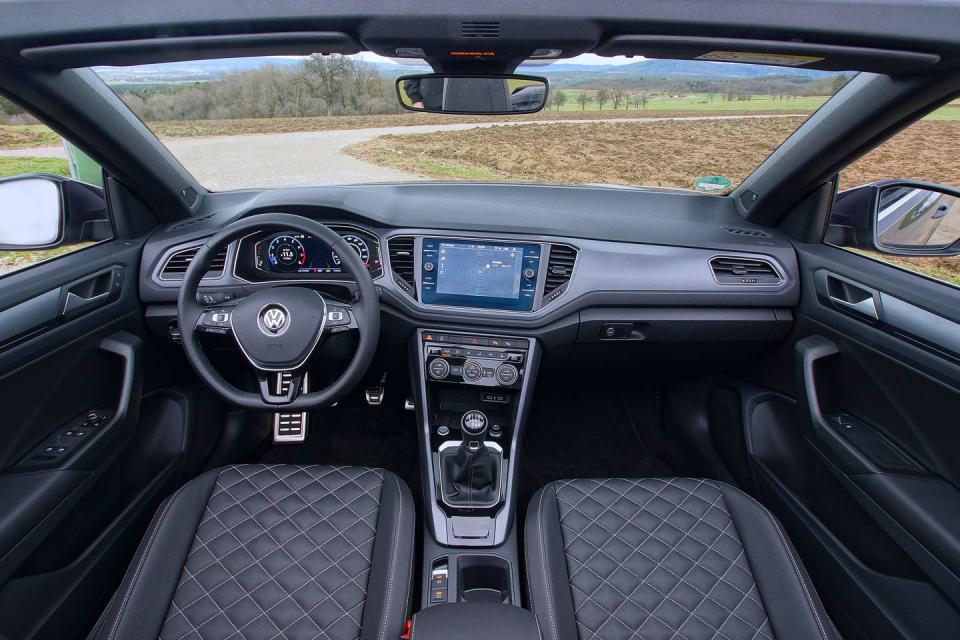First Drive: 2021 VW T-Roc Cabriolet Is Another Try at the Convertible SUV

Up to now, all attempts at making an SUV into a convertible have failed. We're not talking about Jeeps; a Wrangler was a convertible first. We're talking about taking a crossover and cutting off the top. You see, the problem with making an SUV into a convertible is that removing the top also removes any pretense of practicality, and design-wise you end up with something exceedingly odd. The now-defunct Nissan Murano CrossCabriolet and the Range Rover Evoque convertible are the examples of why it just doesn't work. But, Volkswagen isn't giving up on the concept. The company is launching a two-door convertible version of its T-Roc subcompact crossover. Like the rest of the T-Roc lineup, the convertible model has zero chance of coming to the United States. But it's a compelling enough curiosity to merit a close examination.
Based on the VW Group's ubiquitous MQB platform, it's best to think of the T-Roc as a beefier Golf with more ground clearance but without any real off-road capability. In fact, the T-Roc Cabriolet essentially replaces the Golf convertible for our modern, SUV-obsessed times. The droptop T-Roc actually looks better in person than in photos. The removal of the SUV's rear doors and a racy roofline with a small trunk lend it a sleeker, more carlike appearance. Flared wheel arches and an abundance of chiseled horizontal lines help to minimize the visual height of this crossover's tall body. Dropping the top is as easy as holding down a button on the center console for nine seconds, and it works at speeds up to 20 mph. Raising the top takes 11 seconds.

We drove the convertible in Germany, where it's available with two turbocharged engines: A 114-hp 1.0-liter inline-three and a 148-hp 1.5-liter inline-four. Both powerplants are coupled with a precise six-speed manual transmission as standard, although a seven-speed dual-clutch automatic is optional.
Even with the larger of its two engines, the T-Roc Cabriolet is not very exciting in a straight line. VW claims it can hit 62 mph in 9.6 seconds, which is two seconds quicker than what it claims for the 1.0-liter, but that pace is slow by subcompact SUV standards in the U.S. For those still thinking about the T-Roc convertible's performance, the turbo-four's quoted 127-mph top speed is a whopping 11 mph faster than the three-cylinder model's. The larger engine's greater output, however, does not correspond to notably higher fuel consumption. In the European cycle, the 1.5-liter's thirst is about the same as the 1.0-liter's.
Planted and Relatively Practical
Although it looks like a crossover, the T-Roc's chassis is tuned with a sporty bent. Sure, it doesn't have a lot of power or speed to cope with, but its tight and fairly balanced chassis deals well with the speeds you can dial up. The electrically assisted steering is precise, and the suspension feels planted and predictable in corners. In terms of handling, the T-Roc is closer in feel to a compact hatchback than a tall-riding mini-ute such as a Buick Encore or Lexus UX. This is a good thing. The body control and impact absorption of our test car's optional adaptive dampers suited the character of the T-Roc particularly well.

On uneven pavement, the open structure remains sufficiently shake and rattle free. With the insulated soft top raised, the T-Roc seems almost as quiet as a fixed-roof SUV in terms of wind and road noise. While the T-Roc Cabriolet is not available with all-wheel drive, a decent amount of ground clearance means this Barbie Beach Cruiser—ahem, T-Roc—can venture a short way from the beaten path, provided the front tires have sufficient traction.
The cabriolet's passengers enjoy comfortable front seats with plenty of lateral support, and there's a surprisingly large amount of rear-seat space for a compact convertible. A 10-cubic-foot trunk provides adequate storage space for day trips. The rest of the convertible's interior is taken straight from the regular T-Roc, including its array of configurable digital displays and straightforward ergonomics. This VW's cabin boasts tight panel fitments but is let down by disappointing material quality. While the door panels are covered with padded synthetic leather, passengers eye a dashboard made of hard plastic. We hear that an upcoming facelift will bring better materials.

Such improvement would do justice to the otherwise solid qualities of the VW T-Roc Cabriolet, which is far better a thing than we initially expected given its unusual body style and modest starting price. In Germany, pricing for the 1.0-liter model begins at $25,500 (without the steep 19-percent sales tax), while versions with the larger 1.5-liter start around $27,900. We'd probably like it even more if it were available with the all-wheel-drive system and the 296-hp turbo-four found in the higher-performance T-Roc R model. But a T-Roc R convertible would be a double dose of silly. And two sillies don't make a right.
You Might Also Like

